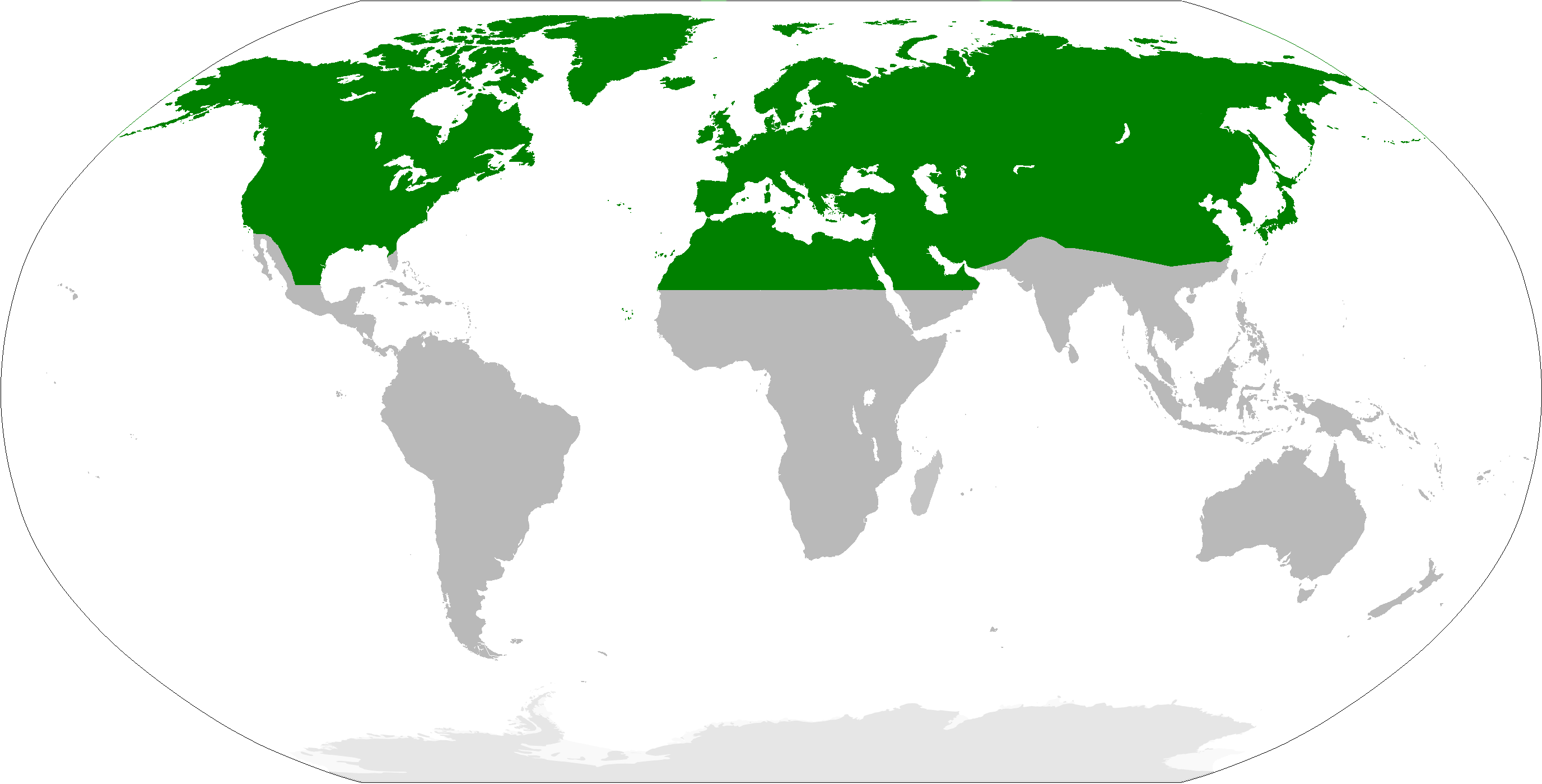Habitat
The blowfly C. vicina is present in all sorts of
habitats. These blowflies have been theorized to have
origins roaming across the whole Holarctic
region (Davies & Harvey 2012). The Holarctic region is
essentially the northern half of the world. It consists of
most of North America, nearly all of Eurasia, Northern Africa,
and the land around the North Pole like Greenland (Encyclopedia
Britannica 2013).

These blowflies are very associated with humans, or in other words they are “synanthropic” (Natural History Museum Online, 2013). Furthermore they are considered an invasive species. They have already followed mankind into South America, the Afrotropical region, Northern India, Australia, and New Zealand (Natural History Museum Online, 2013).
Farming and herding of animals has been a leading
hypothetical factor in explaining why C. vicina and other
blowflies have been following humans across the globe (Olea &
Mariluis 2013). The Alpaca
(Vicugna pacos) located in South America is a great
example of one of these herded animals. Check out
http://bioweb.uwlax.edu/bio203/s2012/sanderfo_ange/ as a source
for further education on the Alpaca.
Although the genus of Calliphora is best represented in
the Holarctic regions and the Australian regions, now after
following mankind, its members can also be
found in all zoogeographical regions (Olea & Mariluis 2013)
which consists of: the Palearctic, Ethiopian, Oriental,
Australian, Nearctic, and Neotropical regions (Holt et al.
2013).
A huge carcass available to the bluebottle fly and its relatives,
especially at the specie's hypothesized roots of the
holarctic region (Marshall et al. 20110), is the moose (Alces
alces). The moose is an awesome organism. It is, on
a side note, my second favorite species, behind the mountain lion of
course. To find out more about this giant go to
http://bioweb.uwlax.edu/bio203/s2012/hautala_gavi/.
Within the whole array of regions that the bluebottle blowfly
C.
vicina can be found they can be further narrowed down to
cosmopolitan habitats (Davies & Harvey 2012). In fact in a
study conducted of London, C. vicina accounted for 46.9 percent
of all Dipteran species present. Of
the family Calliphoridae, this species is the most urbanized. It is actually rare for C. vicina
to be found in rural areas where their close relative’s C.
vomitoria are prevalent (Hwang & Turner 2005).

In a recent study conducted by (Olea & Mariluis 2013) it was
illustrated again that this species is mainly in urban habitats.
C. vicina was found to be widely distributed in Argentina and
frequently located in urbanized areas of houses and markets.
Interestingly though, no records showed them above 800 miles
above sea level. This study and others like (Marshall et al.
2011) have brought about theories regarding possible a maximum
altitude for which these organisms can inhabit.
As far as the best time to find these blowflies, it is evident
that these blowflies hibernate during the winter months.
There is a gradual decrease in sightings as the month of
December approaches. And vice versa, as the warmer months
come about they are found more commonly (Hwang & Turner 2005).
Follow
Adaption to see this blowfly's size and physiology